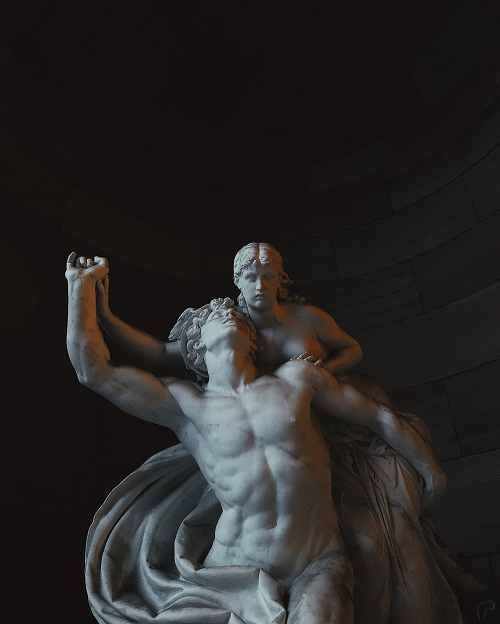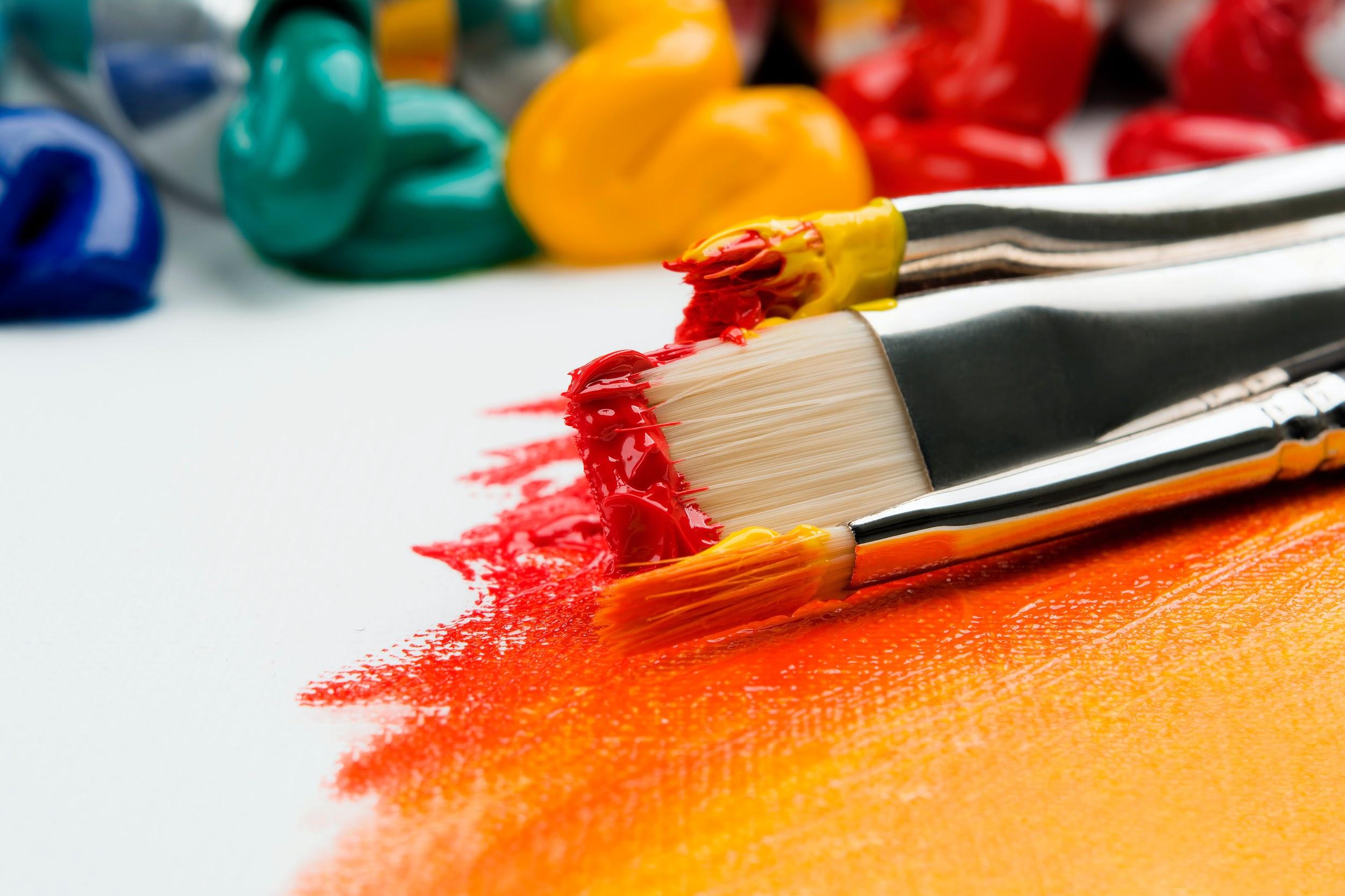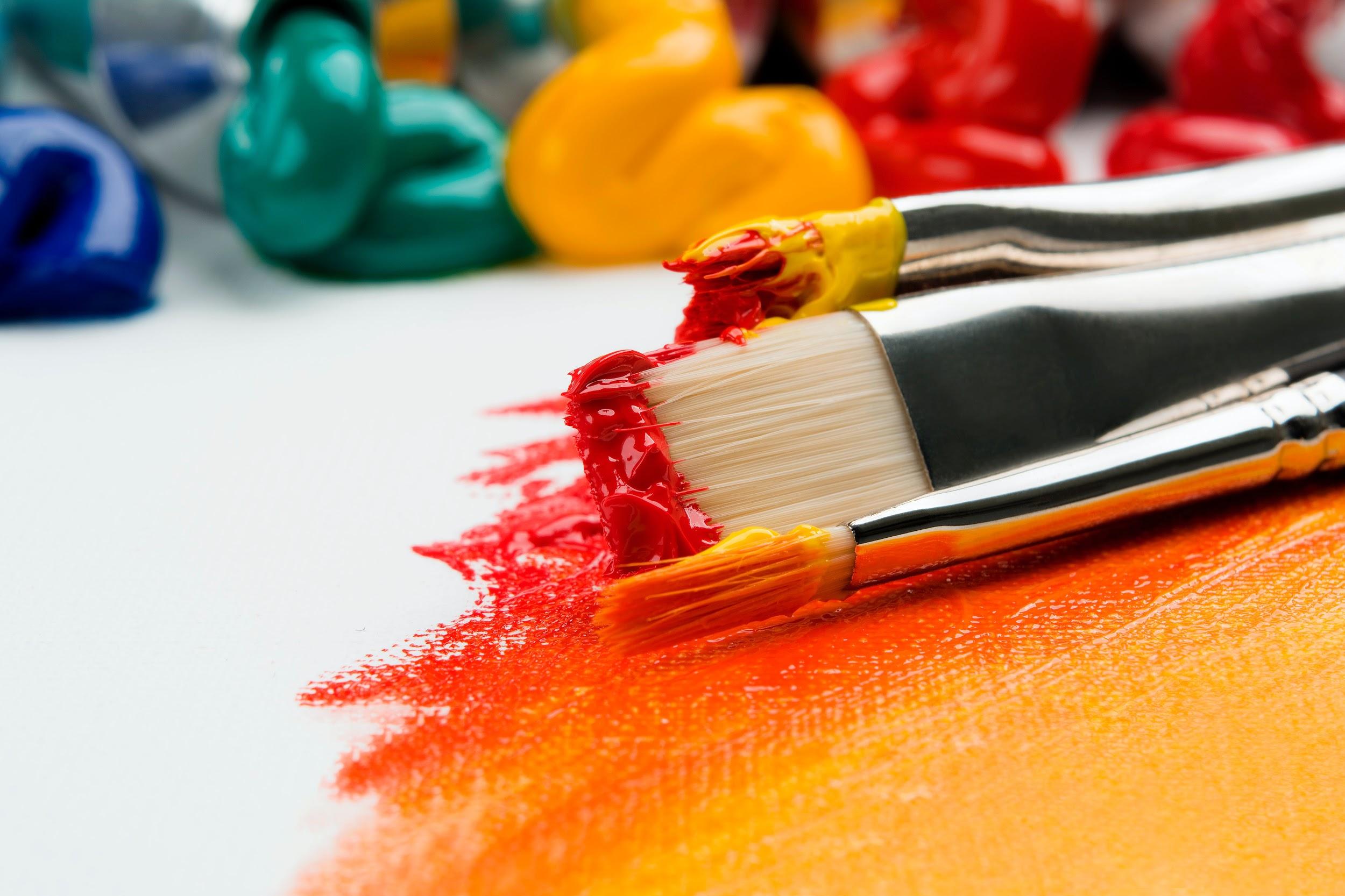The debate on whether traditional art is better than digital art and vice versa is quickly gaining momentum in the art world. As a beginner, choosing which way to go may be confusing. However, as you get acquainted with both art styles, you’ll find what resonates with you.
Traditional art, also called classical art, is part of the culture and identity of certain people that have passed down through generations. It involves the use of traditional mediums that have existed for centuries. Artists take their pens to paper and create masterpieces.
Digital art involves using software to create visual illustrations and media. It requires proficiency with various software and applications to bring what you have envisioned to life. The digital arts have grown massively with the expansion of social media and are becoming increasingly in-demand from businesses and corporations.
Working with either requires you to have a great understanding of the fundamentals of art. The misconception that one is easy to create compared to the other is misleading. When choosing whether you want to embrace digital or traditional art, it is best to weigh the pros and cons.
You should also pay great attention to your skills and willingness to learn new things. If you’re willing to learn, then you can work with any of these options. As a beginner in the art world, you should keep experimenting with both methods. It will help you get a better understanding of both the traditional and digital arts.
As you work on figuring out which art style you’ll be working with, it is important to have all the facts in hand. Get to learn more about both traditional and digital art to help you make an informed decision.
What is Traditional Art?
Traditional art refers to the creation of art using physical hands-on methods. It requires artists to have an understanding of how to experiment with colors, textures, and different art techniques and mediums to create beautiful pieces. This kind of artwork is a creative representation of one’s culture and life experience.
Techniques Used in Traditional Art
Traditional art employs the use of various mediums and techniques to achieve what you are envisioning. Here are 3 major mediums and techniques, so you can understand what traditional art is about.
Drawing
Drawing is often our first introduction to art. You find a pen or pencil lying around your house and begin writing and drawing on a piece of paper or notebook. It is one of the most fundamental art mediums that is used as a basis for the visual arts. If you are looking to build a children’s book portfolio, checkout resources from Isabellearne.
You can use pens, pencil, or even crayons, quills, or fountain pens. Writing instruments have been used throughout history to write, sketch, and draw. They each have a personality of their own and have been used in the traditional arts to create beautiful art pieces.
There are different styles of drawing that you can use to achieve your final product. Popular drawing styles include:
1) Sketching
This style is the foundation for a better representation of art. It involves having a rough drawing of your desired image that often does not focus on intricate details. These sketches can be the final product if the artist aims to have an unfinished look as his artistic expression.
2) Line Drawing
Line drawing requires an artist to be steady in their grip and hand movements. Line drawing uses distinct straight or curved lines to make the desired image. There are various styles of line drawings. Continuous line drawing requires you to draw continuous lines without lifting your hand or the pen until you complete your drawing.
3) Doodling
It is a simple and easy flow of your imagination and vision of the world in front of you. To most people, this is the drawing practice that does not require too much mental work. It helps an artist’s imagination flow and sparks creative ideas. If done right, the doodles can even feature as the final art piece.
Painting
Painting uses various kinds of paint with a brush, easel, or even a sponge or airbrush. Painting is an expressive form of art that has existed for thousands of years. Various painting options change the end product typically by the variation in pigments in the paint. These are tiny colored materials that are in the paint that are immersed in different mediums to produce the results they are famous for. This immersion determines the paint’s viscosity, solubility, and drying time.
1) Acrylic Painting
Acrylic painting is one of the most popular and easiest to get into for beginners. The pigments feature acrylic polymer emulsion that makes them dry faster. This fast drying time helps an artist work quicker on their piece. You can also dilute the paint with water for a different look.
2) Oil Painting
The pigments in oil paints consist of drying oil. These drying oils can vary depending on which oil you choose. The end product varies depending on the oil used. They have different consistencies, drying times, and sheen of the paint.
The possibility to use a combination of oils in one painting encourages creativity. However, you should note that the drying time is significantly slow. This slow drying time provides the perfect opportunity for colors to blend as they should. On the downside, it takes up a lot of time.
3) Tempera
Tempera involves dry pigments that are emulsified and thinned with water. This method widens its uses and decreases the drying time. It also becomes resistant to water after application giving you the perfect opportunity to paint over it with more color.
4) Watercolor Painting
This is a fun option that many artists couldn’t live without. As the name suggests, the pigments here feature a water-soluble solution that makes it easy to use. Watercolor can only be used on paper to achieve your desired outcome. However, due to its solubility, it can change the absorbency and the shape of the paper used.
Sculpting

Sculpting involves using either clay, stone, or wood as the creation medium of your art piece. It is a creative expression that requires expert skills to achieve your envisioned outcome. It requires you to have a rough presentation of what you want to create on paper. This will help guide you as your work on your sculpture.
When using stone and wood, you’ll have to carve by chipping with the use of a hammer and chisel. It will require you to put in more effort into it. However, when working with clay, you only have to use your hands to mold it to your desired shape.
With sculpting, the end product is three-dimensional. It features the three dimensions of space; height, depth, and breadth. It offers a great way to distinguish sculpting from painting and drawing.
Advantages of Traditional Art
Here are the advantages of working on traditional art.
Builds Deeper Understanding
Traditional art helps you build a deeper understanding of art and the history of art. It gives you the perfect opportunity to experiment and see the magic that can be created using different materials. Traditional art strengthens the foundations on which all art (digital or traditional) will be created.
Offers Hands-On Experience
The experience provided by working on an art piece hands-on is incomparable to that of digital arts. It promotes hand-eye coordination and improves your motor skills. Not only that, it can be a great way to get connected to your work and even to relax and express your creativity to a higher, more embodied level. This lets you learn what works best for you and what you like.
Use of Different Mediums for Creation
Traditional arts employ the use of ink pens, pencils, watercolor, paints, paper, stone, and clay. These different mediums are used in their different capacities to achieve amazing creative expressions.
Given that you can create something different with each of these, it gives you room to experiment. The variety also adds the element of versatility that can only be achieved in traditional arts.
Enhances an Artist’s Problem Solving Capabilities
It is human nature to make mistakes as you work on anything. However, when working with traditional art, these mistakes are apparent and can be costly. This is because, with this kind of art, there is no undo button that can erase the mistakes you’ve made. This forces you to think outside the box to find a creative way to fix the mistake. The thought process and creativity employed here allows you to work on your problem-solving abilities.
Produce Unique Pieces
Traditional art is the representation of an artist’s imagination and cannot be replicated by another. Its uniqueness helps it stand out when compared to digital art pieces.
If you were to recreate a traditional art piece, you are bound to miss a few touches that the original artist added. As much as you may come close to it, they won’t be the same. The differences could range from the type of paper to the brush stroke.
These pieces are also unique because of their relationship to light when shone upon them. The art pieces come alive with the details incorporated allowed to shine through. They can reflect light and be present in all their glory. The texture used or the way the brush strokes were applied are all easily seen. These variations are what make traditional art so unique.
Disadvantages of Traditional Art
Here are the disadvantages of working on traditional art.
Visible Mistakes
If you are not able to master the art of disguising your mistakes in plain sight, then they will easily be seen. This is because with traditional art when you make a mistake it can be hard to erase it without ruining the piece completely. Without enough skill to stay away from such mistakes, you may have issues with your artwork.
Difficulties When Reproducing
These kinds of art pieces cannot be reproduced and distributed like digital art pieces. The only way to reproduce copies of this is by using a scanner or a camera. These two methods will give people a visual idea of the painting. However, these methods will also take away from the originality and versatility of the art piece. The texture, brushstrokes, and colors will be muted compared to the real piece.
Consistent Purchasing of Art Supplies
Traditional art requires you to keep buying art supplies compared to digital art. Always make sure that before you start on a project, you are sufficiently equipped. If not, your artwork will stall until you can restock.
What is Digital Art?

Digital art employs the use of technological tools and techniques to create an amazing art piece. It requires you to be well versed with the different software and tools you’ll be using such as Photoshop, Lightroom, and Adobe Illustrator.
Techniques Used in Digital Art
Digital art features different techniques that work to create a variation of art pieces. Major techniques include:
Digital Drawing
This technique features the use of both digital hardware and software to achieve your desired art piece. It allows you to mimic the techniques used in traditional art to work with different strokes, create lines, and shade by using a stylus with a tablet. This is popular because of the ease of use of creating great art pieces without any set-up and with many tools on the software that help you create your art.
Digital Painting
The stylus used in digital painting does not resemble a paintbrush but it works like one. You can manipulate it to achieve different stroke sizes as you paint. This process requires you to be mindful of your skills to ensure you get a smooth translation. This will help especially when mixing different colors in the same art piece.
Animation
Animation involves the use of technology to create the illusion of movement in an art piece. It is achieved by drawing each frame by hand or using a previously created image. You can then use your software to animate the drawing. This is the most unique digital artform that can not be replicated using traditional art, and is a favorite among young artists.
Digital Sculpting
Digital sculpting involves software to sculpt a 3D model generated by a series of 2D images to give the illusion of a 3D image. These 3D images can be seen from different angles which makes them a sculpture. However, since it is digital art, you cannot touch it. Your chosen software will provide the tools needed to create your sculpture.
Advantages of Digital Art
Easy Access
In today’s world where everyone has access to a smart device, getting started with digital arts is easier compared to traditional arts. Digital arts involves a one-time investment in the tools and software that you’ll be using for your art pieces. Once you’ve purchased everything you’ll not have to worry about running out of supplies.
Shareable
Given that the work you do is all in the digital space, it will be easier to share. Sharing with friends and social media can easily be done with the click of a button. When digital art is shared it maintains its authenticity and translates exactly as the artist intends. The ability to share your work with the public means that your artwork will gain more exposure.
Convenient
Moving from one place to another with your various art supplies can be really inconvenient. It means that you’ll have to carry different art supplies to ensure that you can work on your art when the time comes. However, carrying huge bags of these supplies can be very frustrating and a lot of unneeded hassle. This is where digital art comes in. The only thing you’ll be carrying around is your tablet and stylus!
Increased Productivity
When working with digital art, it is easier to correct mistakes made by erasing or just clicking on the undo button. This feature helps artists work faster and focus on making their pieces better.
Not having to worry about making mistakes allows them to experiment with ease. The fact that you can remove something that does not contribute to your art is greatly appreciated by modern artists that run by commission or an hourly pay.
Unlimited Possibilities
Given the easy shareability of digital art, your pieces can catch the eye of people who are able to offer you opportunities in the art world. In the world we are in, digital media is booming and is increasingly in need of creative content.
This could open doors for a great career opportunity using your creative and technical skills to provide quality art pieces. These pieces are increasingly becoming popular as different people and companies embrace uniqueness as a powerful selling point.
Users with websites, social media accounts, and podcasts are slowly embracing artwork in place of stock photos. This goes to show that sharpening your digital art skills will expose you to the right opportunities.
Disadvantages of Digital Art
Some of the disadvantages of digital art include;
Require Extensive Digital Skills
Working on a digital art piece requires the use of different apps and software that you may not be familiar with. This may prove to be a challenge, especially when starting. However, the skills can be learned with time. Take your time and commit to getting proficient at one or two tools.
Lack of Original Hard Copy
After working on your art piece, the only thing you have to show for it is the end product on a screen. You don’t get to have a physical representation of the work you have done. To some, this might be disappointing. They may prefer something they can touch and have displayed. If that’s the case, then working on traditional art may be better.
Access to Tools and Software
The tools, software, and programs required to create digital art may be a little more expensive compared to the tools needed for traditional art. This can prove to be a challenge for many people. However, the investment you make is an investment in your future. Once you get the tools you’ll be ready to create.
Conclusion
Both traditional and digital art requires great levels of skill to create something extraordinary. Taking the time required to create something beautiful will set you apart regardless of the medium you choose.
Both these art styles have their pros and cons. There is no perfect choice. It is all dependent on what you can work with and what comes easy to you. Which art style do you think resonates the most with you?



